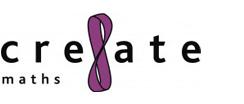Structures
This list consists of lesson plans, activities and ideas to support engineering through the topic of Structures. It contains ideas for how to link engineering to the topic, tips on using the resources, suggestions for further use and background subject knowledge to support teachers. Resources support the teaching of forces and properties and changes of materials. It also supports a variety of creative and practical activities,and the knowledge, understanding and skills needed for children to engage in an iterative process of designing and making.
Spaghetti Towers
Linked to DT, Spaghetti Towers is a fun challenge which does exactly what it says on the tin, requiring children to build a tower made of spaghetti. This would be an excellent activity to do at the start or the end of teaching 'Properties and Changes of Materials'.
This activity could be extended by asking children to suggest other foodstuffs which could be used to create structures. This could be set in the context of an end-of-topic party for which all the dishes need to resemble structures.
Welding with Chocolate
This is an engaging - and tasty - way to have a go at engineering, as well as giving children an opportunity to investigate Properties and Changes of Materials. One of the huge advantages of this activity is that children can see the relevance of the work that they are doing; they can see the uses and implications of the science that they are learning about. I would use this activity to focus on the uses of particular materials, giving children the opportunity to use secondary sources to explore what materials are used for bridge building and welding in real life. I would also use this to investigate reversible and irreversible changes, perhaps even over-heating some chocolate so that children can see what an irreversible change looks like.
A Fine Balance: Building a Hanging Sculpture
This activity is a project in itself and links art and design technology, whilst applying knowledge of forces and materials. The main task is to design and make a hanging structure for a school assembly hall, which is introduced by a story. Have children think about the design of their structure and the materials they might use to create it, this will be in regard to the purpose of the structure and where it will be in the school. Having children build and test sculptures in small groups, will let them see how engineers work as teams and also show them how creativity is an important part of the design and make process.
Vertically Challenged
This pack provides lots of activities which help show children the key ideas and concepts used in designing and constructing buildings such as: how levers and pulleys work, the properties of materials and the forces involved in different structures. Activity 10 gets children to model different parts of a building and feel for themselves the forces that architects and engineers have to deal with when creating structures. Children act out columns, cantilevers and arches and think about the forces that they are feeling. They could then model other structures they come up with themselves like, a tunnel, dome and different kinds of bridges. Acting out the forces could then help support them in creating some of the structures using different materials.
Bridge Building
Challenge children to build a bridge 50cm wide to support the weight of a food tin. Can they do this using only drinking straws, tape and string? Get them to investigate different shapes to see which are better at supporting a tin. They can use what they have found out to design and create their bridges and test them out.
This video provides some great ideas for running a similar activity with a class of children. It follows a STEM Ambassador working with a Year Five class on a bridge building activity.
Bridges and Structures
This activity is also a good one to get children thinking about simple structures. Get children working in small groups to create structures from a single sheet of A4 paper. Following on from this they are challenged to create the tallest free-standing tower and the longest possible span between two end supports. Ask children to test their bridges for strength and say which designs work and why.





